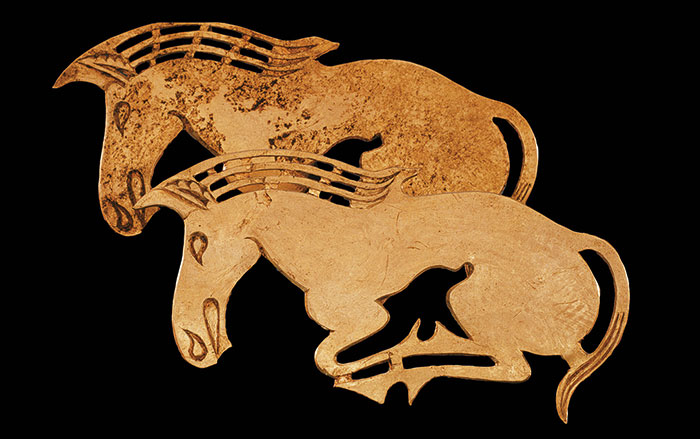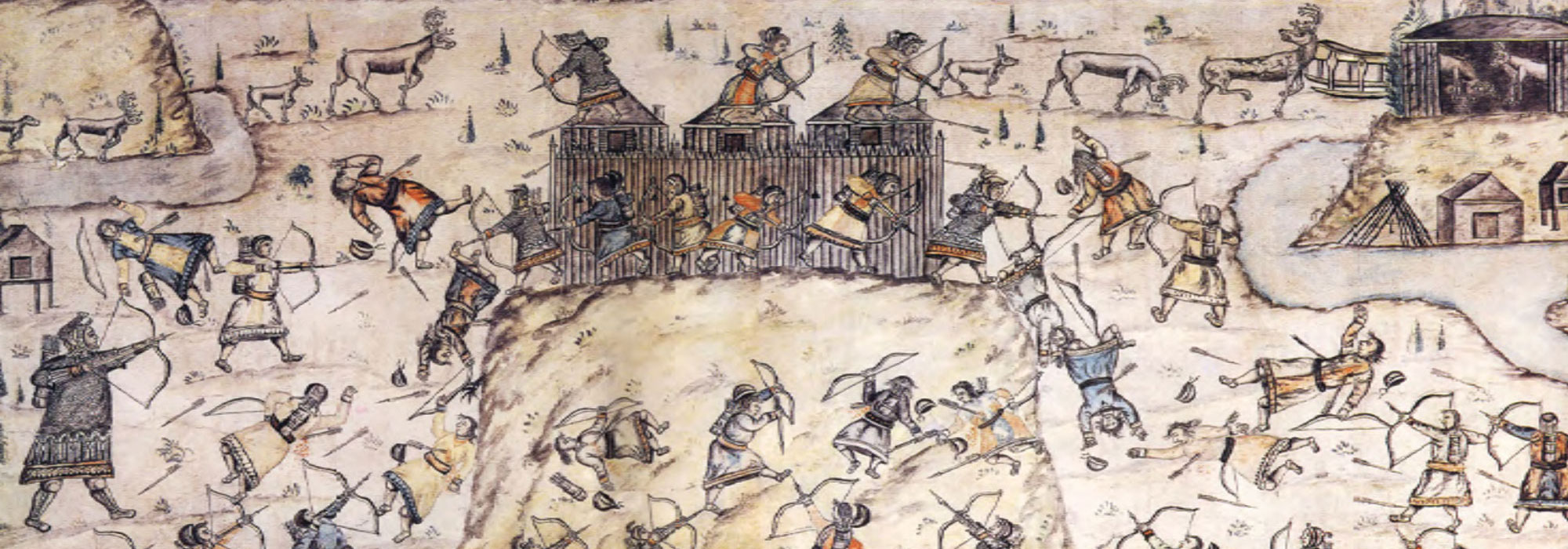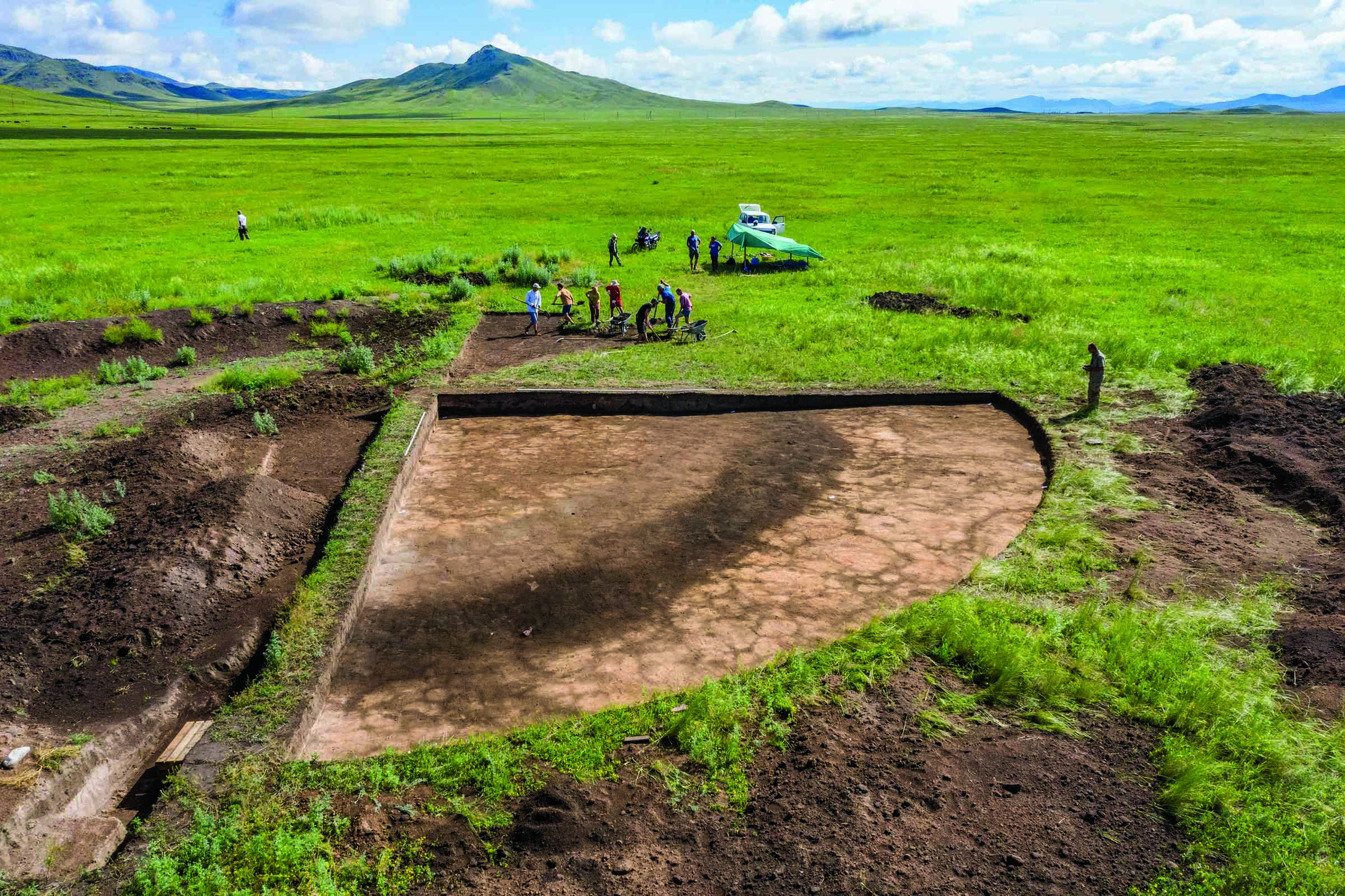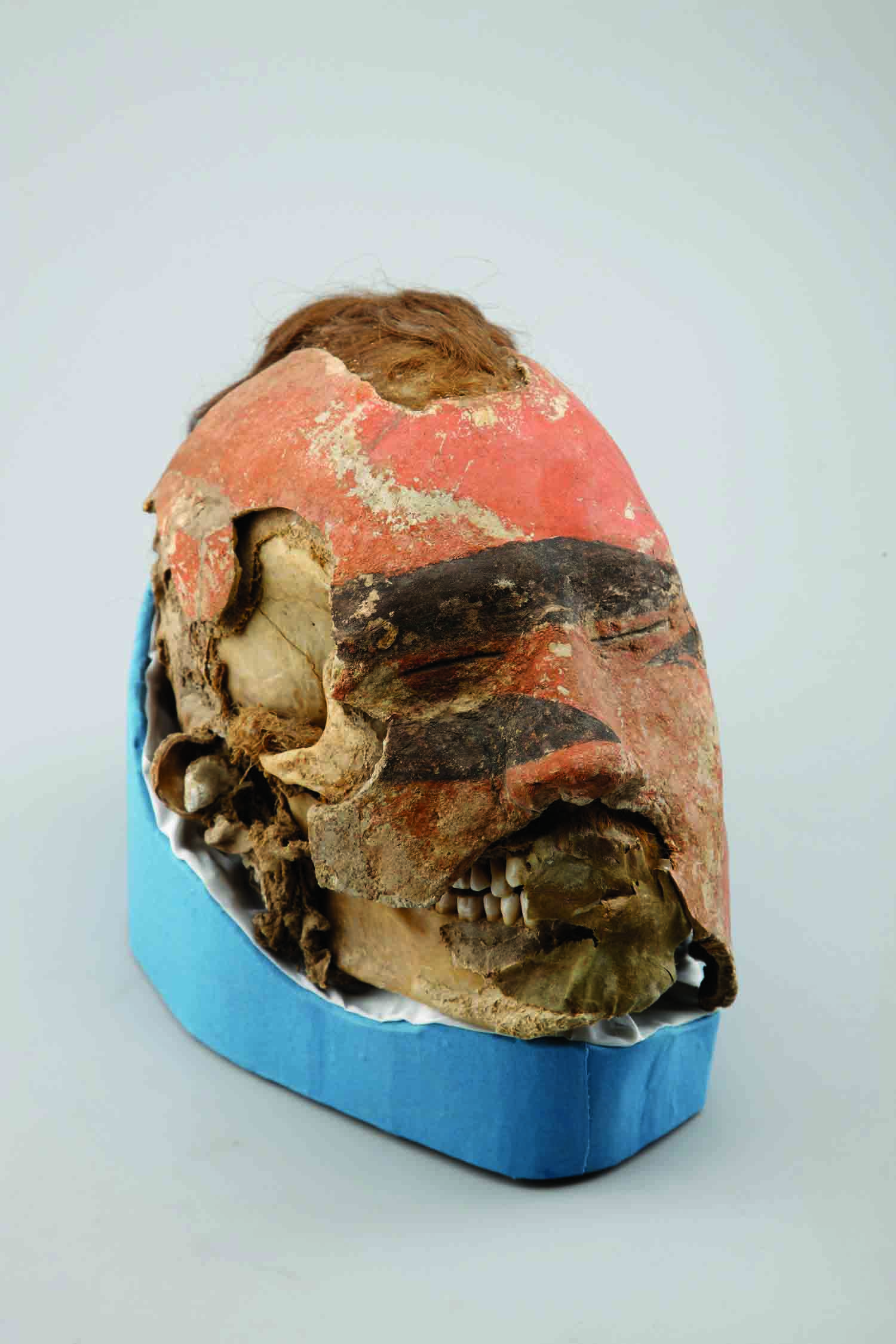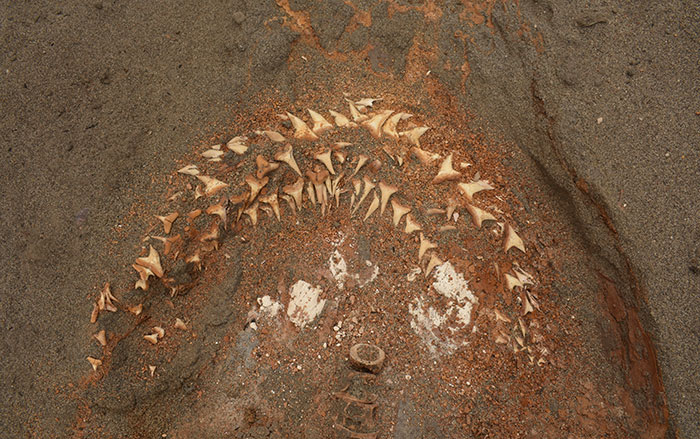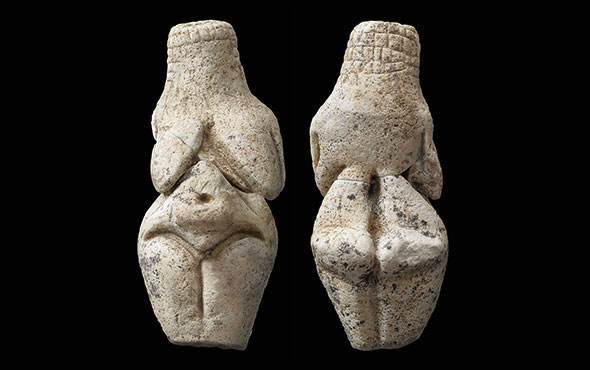
NOVOSIBIRSK, RUSSIA—According to a report in The Siberian Times, a team of researchers led by Natalia Polosmak of the Russian Institute of Archaeology and Ethnography and Konstantin Kuper of the Institute of Nuclear Physics used fluoroscopy to examine a head-shaped sculpture crafted by the Tagar culture more than 2,000 years ago. The clay head, which resembles a young man, was discovered among about 15 sets of cremated human remains in a Shestakovsky burial mound in eastern Siberia in 1968. X-rays made of the artifact at the time revealed a small skull within the sculpture. Marks in the clay on the back of the head suggest it had been attached to a body, perhaps made with the rest of the individual’s remains, grass, leather, and birch bark. The new study, however, revealed that the skull within the sculpture belonged to a ram. Polosmak suggests the Tagar people may have created a body to bury as a symbolic replacement if they were not able to recover the remains of the deceased. “This must have been the only way to ensure the after-death life of a person who had not returned home,” she said. Researcher Elga Vadetskaya suggested that a ram’s head may have been substituted for the man’s remains if they had completely decomposed before the elaborate burial ritual had been completed. To read about tattooed mummies unearthed in Siberia's Altay Mountains, go to "Ancient Tattoos: Iron Age Mummy."


